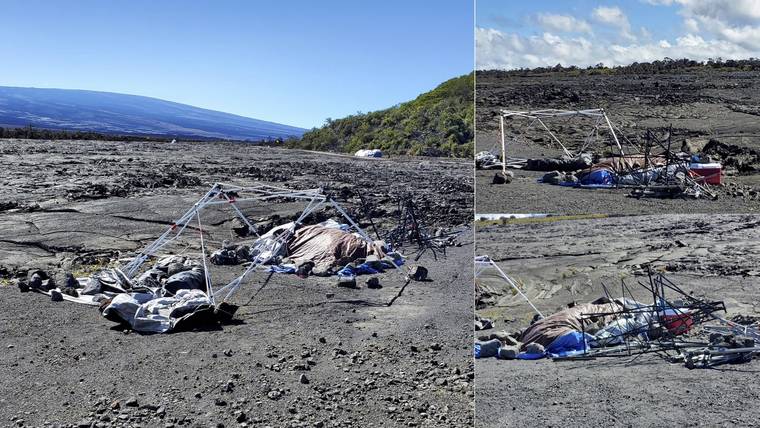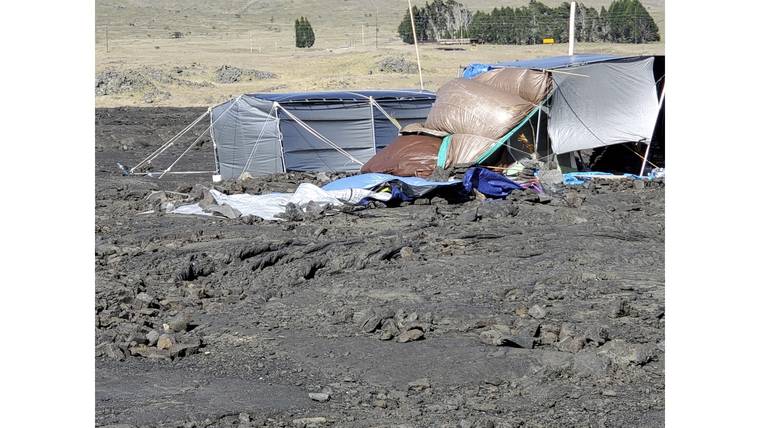Anti-Thirty Meter Telescope protesters intend to remove abandoned property left behind following the months-long occupation of the Maunakea Access Road within the coming days.
After a truce was made between the county and demonstrators in December, wherein Hawaii County Mayor Harry Kim assured protesters that no TMT construction efforts would be made until at least the end of February, the size of the protest near the access road has thinned considerably.
But while there are fewer people regularly attending the protest site, signs of the 5-month-long protest remain, with dismantled tents and abandoned property littering the sides of the Daniel K. Inouye Highway, also known as Saddle Road.
Protest leader Andre Perez said the protesters — who refer to themselves as kia‘i or protectors — have always planned to clean up the area, but those plans were sidetracked first by the need to clear their main tents off of the access road, and then by more than a week of foul weather.
“Right now, all the tents are piled up because of the wind,” Perez said. “But the intention is to remove them ourselves.”
The abandoned personal property likely will be removed this weekend, Perez said.
Perez said that, as far as he knows, no state agency has requested that the items be removed.
The state Department of Transportation has jurisdiction over the access road, the highway and their immediate shoulders. The surrounding land north of the highway is managed by the Department of Hawaiian Home Lands, and the pu‘u south of the highway is part of the Mauna Loa Forest Reserve, managed by the Department of Land and Natural Resources.
Shelly Kunishige, spokesperson for the Department of Transportation, said her department has heard no complaints about property left on the highway shoulders, but said that the department is working with local law enforcement to determine whether any of the abandoned items pose a hazard to drivers.
Maj. Samuel Jelsma of the Hawaii Police Department agreed there have been no complaints, but added that most of the detritus is on DHHL land, and any pressure to remove the property would come from that agency.
A DHHL representative declined to comment.
Now that the weather is has eased somewhat, Perez said most of the abandoned property will be removed, but the main kupuna tents on the side of the access road will remain, as will the main support camp at Pu‘u Huluhulu.
Throughout the occupation, signage erected at the site reminded attendees to not desecrate the land by leaving trash behind. Trash and recyclables were collected in designated bins that were regularly emptied, as were portable toilets.
However, the DLNR raised concerns in September about the impact the high number of visitors have had on the nearby Pu‘u Huluhulu, where four endangered ‘anunu vines were discovered to have been destroyed.
Since then, the protesters limited foot traffic to the pu‘u, and a DLNR spokesperson said last week that there has been no additional damage, and the vines have “really taken off in other areas.”
Email Michael Brestovansky at mbrestovansky@hawaiitribune-herald.com.









